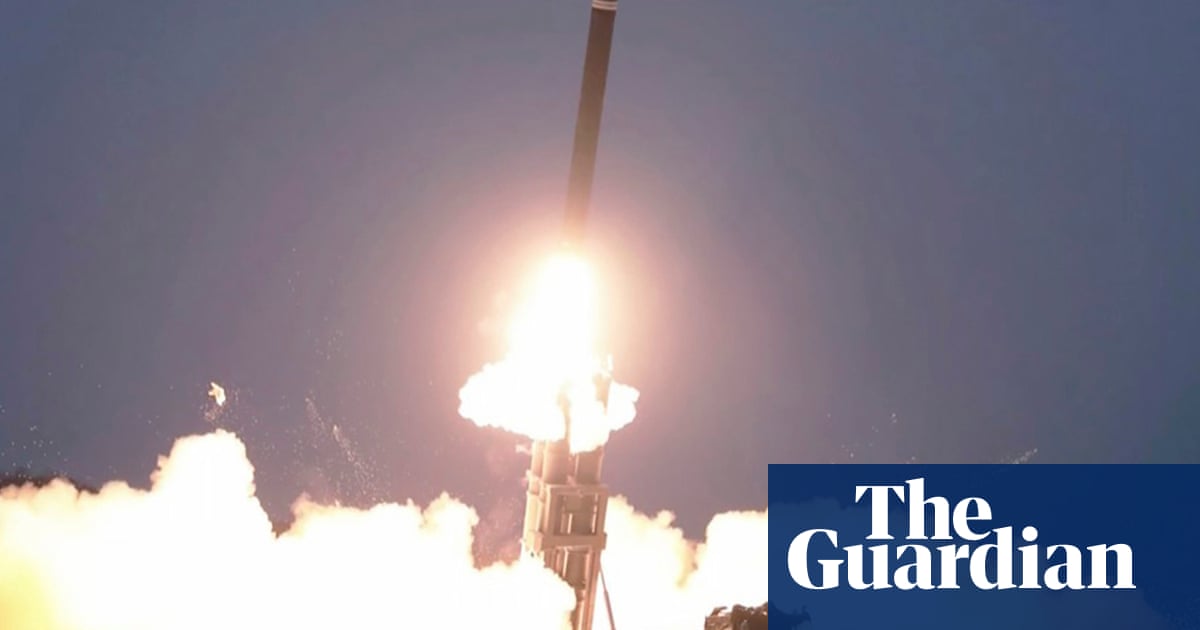The United States only has about 25% of the Patriot missile interceptors it needs for all of the Pentagon’s military plans after burning through stockpiles in the Middle East in recent months, an alarming depletion that led to the Trump administration freezing the latest transfer of munitions to Ukraine.
The stockpile of the Patriot missiles has fallen so low that it raised concern inside the Pentagon that it could jeopardize potential US military operations, and deputy defense secretary, Stephen Feinberg, authorized the transfer to be halted while they reviewed where weapons were being sent.
Donald Trump appeared to reverse at least part of that decision on Monday when he told reporters in advance of a dinner at the White House with Israeli prime minister Benjamin Netanyahu that he would “send some more weapons” to Ukraine, although he did not disclose whether that would include Patriot systems.
Trump also told Ukrainian president, Volodymyr Zelenskyy, in a phone call that he was not responsible for the halt in weapons shipments and that he had directed a review of US weapons stockpiles but didn’t order the freeze, according to people briefed on the conversation.
But the determination last month to halt the transfer, as described by four people directly familiar with the matter, was based in large part on the Pentagon’s global munitions tracker, which is used to generate the minimum level of munitions required to carry out the US military’s operations plans.
According to the tracker, which is managed by the joint chiefs of staff and the Pentagon’s defense security cooperation agency, the stockpiles of a number of critical munitions have been below that floor for several years since the Biden administration started sending military aid to Ukraine.
The Trump administration started a review of the depleted level of Patriot missiles and other munitions around February, the people said. Deliberations accelerated after the US deployed more of the interceptors in the Middle East to support the Houthi campaign and to Israel.
The situation also became more acute following Trump’s move to bomb Iran’s nuclear facilities last month, the people said, when the US fired close to 30 Patriot missiles to intercept Iranian ballistic missiles fired in performative retaliation at the Al Udeid base in Qatar.
The recent depletion of Patriot missiles and other munitions formed part of the basis of a “recommendation memo” by Elbridge Colby, the under secretary of defense for policy, that outlined several options to conserve weapons and sent to Feinberg’s office.
Earlier reports said Colby, who has drawn criticism from Democrats for prioritizing shifting resources from the Ukraine conflict in preparation for a potential war with China, had paused the transfer but two of the people said the undersecretary’s office lacks the power to make such a unilateral move.
The decision was rather made by Feinberg, the former chief executive or Cerberus Capital Management to whom Colby reports, the people said. Defense secretary Pete Hegseth then signed off on Feinberg’s determination.
But the abrupt pause has come at a critical time for Ukraine, as Russia last week launched its largest aerial offensive to date and Ukraine has limited options to acquire both precision-guided and more basic weapons to hold off increasingly intense Russian attacks.
Ukraine is also largely unable to directly buy weapons from defense contractors for its purposes, since a new order is estimated to take years to fulfill, and it would only be completed after the Pentagon had its own orders completed since the defense department is a higher priority customer.
Trump’s decision to reverse course and allow some defensive munitions to be sent to Ukraine appears to have come amid growing frustration with Russian president Vladimir Putin, who he criticized on Monday for not helping end the war.
Spokespeople for the White House and the Pentagon confirmed some transfers would resume at Trump’s direction but did not specify whether the weapons being sent to Ukraine would involve munitions at critically low levels.
after newsletter promotion
“As Operation Midnight Hammer proved, the American military is stronger than it’s ever been. President Trump wants to stop the killing and has pledged to provide Ukraine with additional defensive munitions,” said White House spokesperson Anna Kelly.
While Trump has publicly complained about Ukraine aid in financial terms, Feinberg was briefed that the larger problem has been with the ability for the US to manufacture the weapons to quickly backfill the depleted stockpiles, two of the people said.
The US has been transferring weapons to Ukraine using two principal channels: through a drawdown of defense department stockpiles, and through the Ukraine Security Assistance Initiative (USAI), where the defense department pays contractors to manufacture weapons to go to Ukraine.
Both transfer mechanisms was set to have been affected by the freeze, the people said, since the Pentagon is prioritizing replenishing its stockpiles using the same defense contractors being relied upon to build weapons for Ukraine through the USAI program.
For the latest weapons shipment to Ukraine, the US had earmarked dozens of Patriot missiles among other munitions including air-to-air Sparrow missiles, Hellfire missiles, GMLRS rocket artillery and anti-tank guns.
The principal concern appears to revolve around the Patriot missiles, which the US produces 600 per year but Iran alone has more than 1,000 ballistic missiles remaining it could theoretically use against US bases in the region if the ceasefire with Israel were to break down.
The US has also transferred around 2,000 Stinger missiles to Ukraine, which officials estimated to be equivalent to two-and-a-half years of production, and is increasingly used by the US military for its own defense purposes against hostile drones, the people said.

 2 months ago
89
2 months ago
89

















































